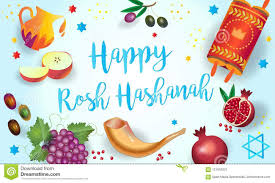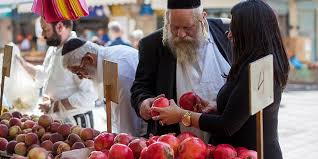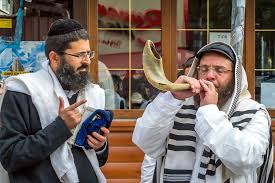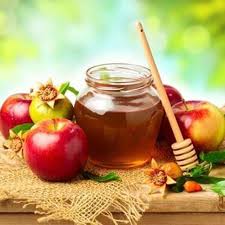Culture
A Rosh Hashana prelude - Insights into the High Holydays
By Itzhak Rabihiya
Several Jewish holidays will take place this year between 29 September - 21 October 2019. Following brief summary.
The period preceding the Jewish New Year is marked by special penitential prayers, recited before the regular morning prayers, and the blowing of the ram’s horn (shofar in Hebrew) after the morning prayer service. Jews of North African and Middle Eastern origin began to recite these special prayers on 2 September; Jews of European origin began to recite them on 22 September. These special prayers are said daily (except on the New Year holiday itself and the Sabbath) until the day before Yom Kippur (8 October).

Rosh Hashanah
Rosh Hashanah (the two-day Jewish new year), the observance of which is mandated by Leviticus 23:23-25, will begin at sunset on Sunday, 29 September and conclude at nightfall on Tuesday, 1 October. Both days are marked by special prayers and scriptural readings.
God said to Moses, “Remove your shoes, for the place where you stand is holy ground” (Exodus 3:50). The place where we stand on Rosh HaShanah is also holy ground. We do not have to remove our shoes (though we do on Yom Kippur), but what we have to put aside are the concerns that fill our minds throughout the rest of the year.
These concerns which have no place on Rosh HaShanah are jealousy, rivalry, egotism and selfishness, attitudes which put down other people and leave no room for them, especially if their race, religion, politics and possessions are different from mine.
The centerpiece of the Rosh Hashanah service is the blowing of the shofar during morning prayers. (The shofar is not sounded on the Sabbath should either of the two days fall on Saturday.) Both days are full public holidays and, as on the Sabbath, there will be no public transportation or newspapers. In addition, many businesses, museums and other institutions, which are normally open on the Sabbath, will be closed over the holiday.

Rosh Hashanah is also characterized by two special customs. The first is the eating of apple slices dipped in honey, symbolizing the hope that the coming year will be “sweet.” The second involves going to a natural source of flowing water (such as an ocean, river, or spring), reading a selection of scriptural verses and casting pieces of bread into the water – to symbolize the “casting off” of the previous year’s sins; this practice derives from Micah 7:19 (“…and You will cast all their sins into the depths of the sea.”) This ceremony takes place on the first day of Rosh Hashanah (or on the second, if the first day falls on the Sabbath).
The Period between Rosh Hashanah and Yom Kippur

The ten days between New Year and Yom Kippur (inclusive) are known as “The Ten Days of Repentance”. Jewish tradition maintains that this is a time of judgment when all people and nations are called to account for their deeds of the past year, and when their particular fates for the coming year are decided.
The day after the New Year holiday is a day of fasting known as the Fast of Gedaliah, and commemorates the murder of Gedaliah, the Jewish governor of Judea, who was appointed by the Babylonians after they captured
Yom Kippur
Yom Kippur (Hebrew for “The Day of Atonement”) begins at sunset on Tuesday, 8 October, and concludes at nightfall on Wednesday, 9 October. Its observance is mandated by Leviticus 16:29-31 and 23:27-32. The holiest day of the year, Yom Kippur is the day on which, according to Jewish tradition, our fates for the coming year are sealed. Synagogue services – centering on the penitential prayers – will continue for most of the day and include special scriptural readings (including the Book of Jonah in the afternoon). Memorial prayers for the deceased, said four times a year, are recited on Yom Kippur. At nightfall, the shofar is sounded once to mark the end of Yom Kippur.

Yom Kippur is a full public holiday in
Sukkot
The seven-day Sukkot festival, mandated by Leviticus 23:34-35 and 23:39-43, begins at sunset on Sunday, 13 October and concludes at nightfall on Sunday, 20 October. The first day, from sunset on Sunday, 13 October, until nightfall on Monday, 14 October, is a full public holiday. All seven days of the holiday are marked by special prayers and scriptural readings – including the Book of Ecclesiastes, which is read on Saturday, 19 October. Sukkot is a joyful, family oriented holiday, which follows – and provides a contrast to – the somber, introspective and private character of Yom Kippur. Many businesses and institutions will either close or operate on a reduced basis.
Sukkot is characterized by two main practices. Jews are enjoined to build, take all of their meals in, and (if possible) sleep in, temporary huts topped with thatch or palm fronds during the festival. These huts (sukkot in Hebrew) commemorate the temporary, portable dwellings in which the Jewish people lived during their 40-year sojourn in the wilderness that followed their liberation from slavery in
Stories for you more +